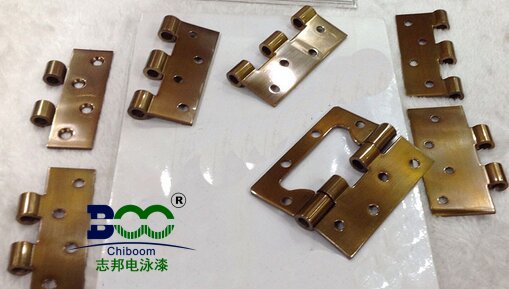Electrophoretic Paint Peeling: Causes and Solutions
Electrophoretic painting, as an efficient and environmentally friendly coating technology, has been widely applied in the field of metal surface treatment. However, the issue of electrophoretic paint peeling occurs frequently, which not only affects the aesthetics and durability of the product but may also pose potential threats to product quality and safety. This article delves into the causes of electrophoretic paint peeling and proposes corresponding solutions.
The primary reason for electrophoretic paint peeling is inadequate adhesion. The bonding force between the electrophoretic paint and the substrate is crucial for ensuring the durability of the coating. If the adhesion is poor, the coating can easily peel off when subjected to external forces. Various factors contribute to inadequate adhesion, such as improper substrate surface treatment, unreasonable electrophoretic paint formulation, inadequate baking temperature and time, etc.

The surface treatment of the substrate is a key factor affecting the adhesion of electrophoretic paint. If impurities such as oil, rust, or oxide scale are present on the substrate surface, they can severely impact the bonding between the electrophoretic paint and the substrate. Therefore, thorough cleaning and pretreatment of the substrate must be carried out before electrophoretic coating to ensure a clean and impurity-free surface. Additionally, phosphating treatment is an effective means to enhance the bonding force between the substrate and electrophoretic paint. By undergoing phosphating treatment, a dense phosphating film can be formed on the substrate surface, strengthening the adhesion between the electrophoretic paint and the substrate.
An unreasonable electrophoretic paint formulation can also lead to poor coating adhesion. The selection and ratio of components such as pigment-to-binder ratio, solvent content, and curing agent in the electrophoretic paint directly affect the adhesion and performance of the coating. Imbalances in the pigment-to-binder ratio, excessively high solvent content, or insufficient curing agent can all result in decreased coating adhesion, subsequently triggering peeling issues. Therefore, in the formulation design of electrophoretic paint, the interactions and influences among various components should be fully considered to ensure a reasonable formulation and stable performance.
Baking temperature and time are also crucial factors affecting the adhesion of electrophoretic paint. Baking is an important step in the electrophoretic coating process, as it allows the solvents in the coating to evaporate and the resin to cure, thereby improving the adhesion and hardness of the coating. If the baking temperature is too low or the time too short, the solvents in the coating may not evaporate completely, and the resin may not cure sufficiently, leading to decreased coating adhesion. Conversely, if the baking temperature is too high or the time too long, it may cause the coating to over-cure and become brittle, similarly affecting its adhesion. Therefore, during the baking process, strict control of temperature and time is essential to ensure that the coating can cure fully without over-curing.
To address the issue of electrophoretic paint peeling, the following measures can be taken: firstly, strengthen the cleaning and pretreatment of the substrate surface; secondly, optimize the formulation design of electrophoretic paint; thirdly, strictly control the baking temperature and time; and fourthly, enhance quality control and inspection during the production process. By implementing these measures, the adhesion of electrophoretic paint can be effectively improved, reducing the occurrence of peeling issues.
Electrophoretic paint peeling is a complex problem that requires comprehensive consideration and resolution from multiple aspects. Only by strengthening production management, optimizing process parameters, and raising product quality awareness can the effectiveness of electrophoretic coating and product durability be ensured.





 WeChat
WeChat